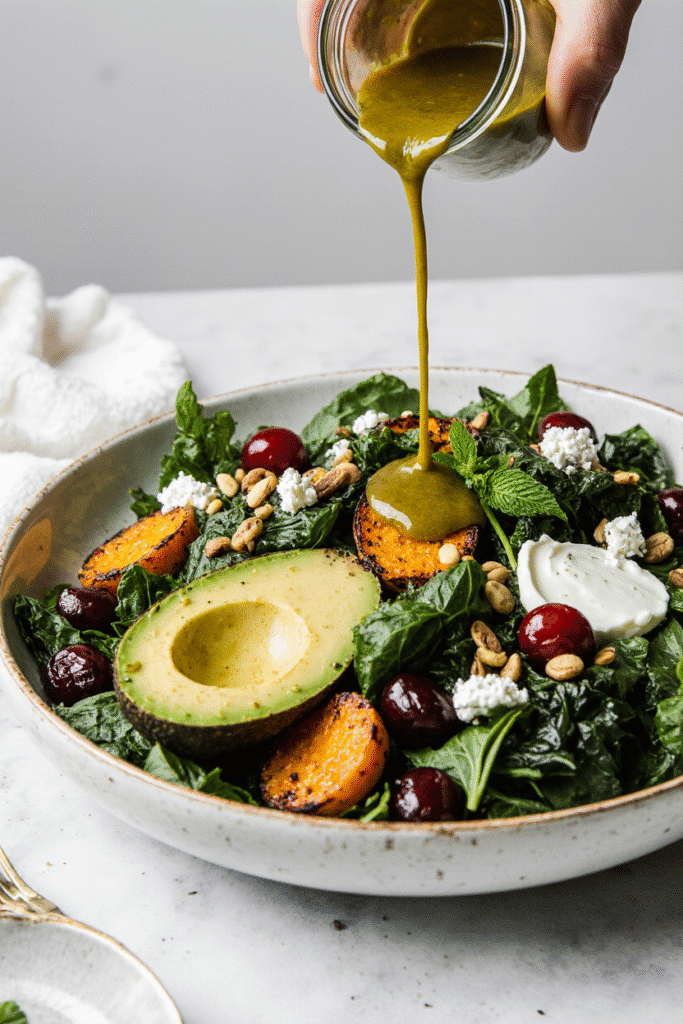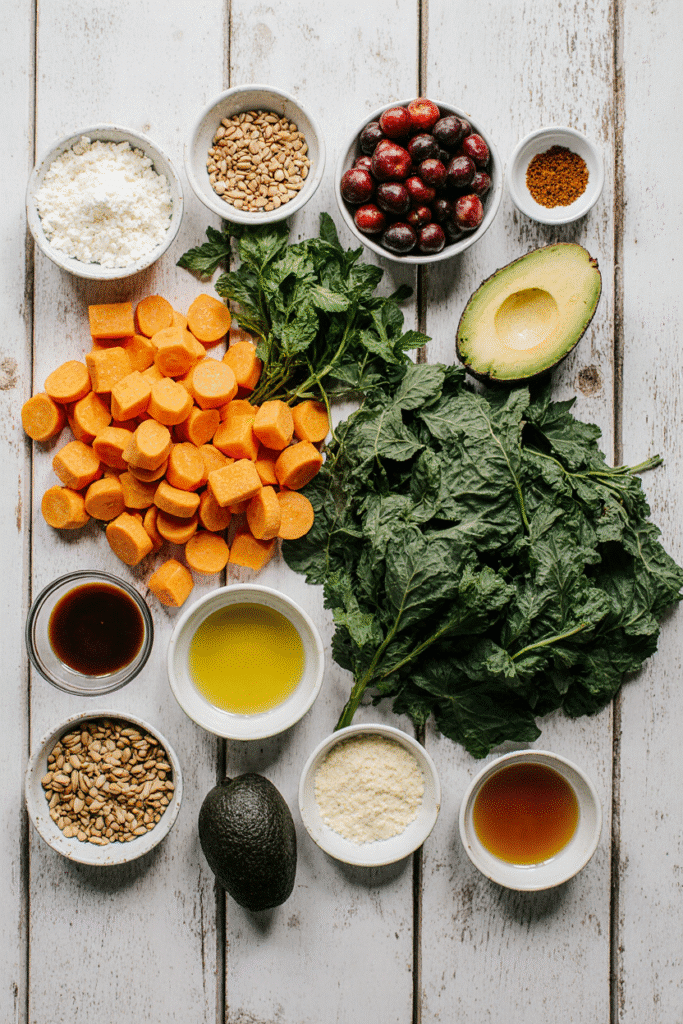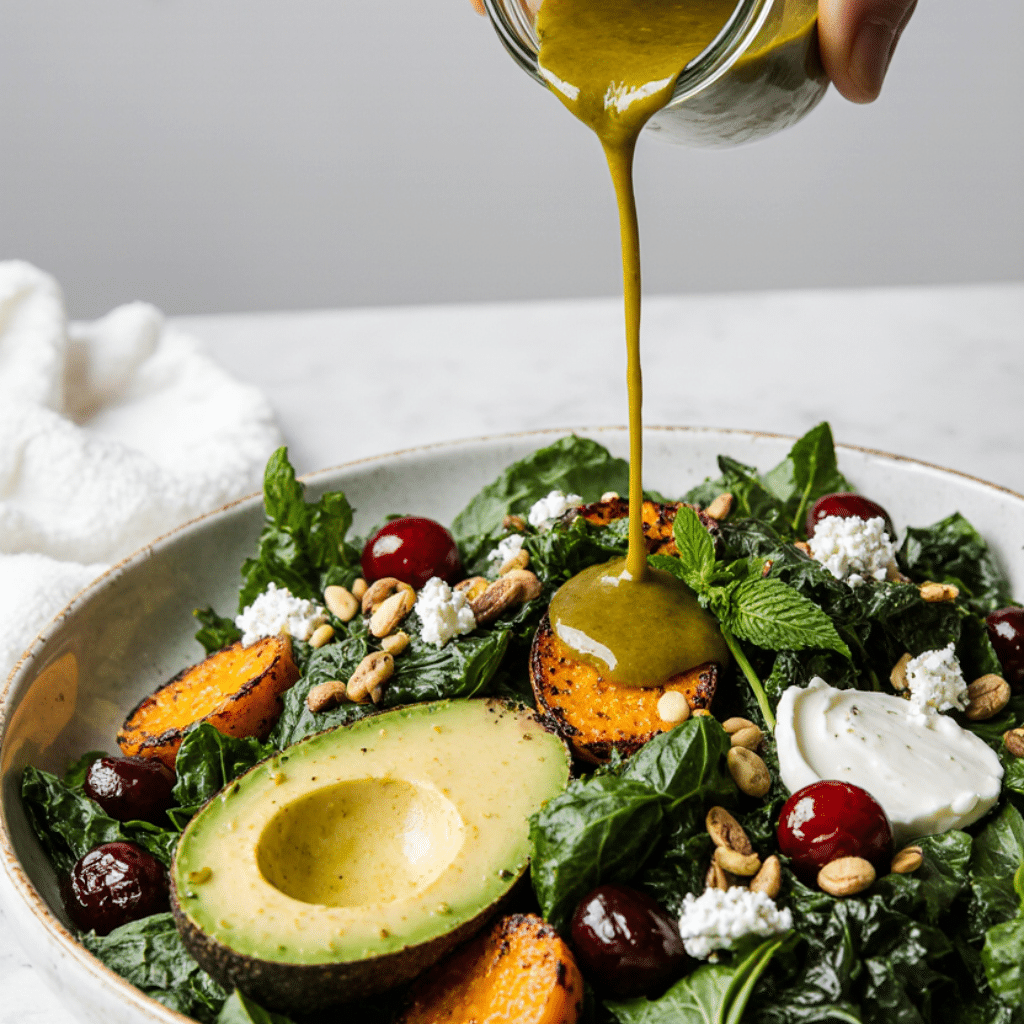
Anti inflammatory salad dressing was never something I expected to get excited about—until I needed it. Years ago, when I was battling chronic inflammation, most store-bought dressings were off-limits: full of seed oils, processed sugars, and unpronounceable ingredients. I needed something better. Something healing, but still delicious.
So I went back to my roots in my Portland kitchen—where herbs grow just outside my window—and remembered my grandmother’s lemony garlic vinaigrettes. That’s when I created this golden, creamy dressing with tahini, turmeric, and fresh ginger. It’s become my go-to for everything from salads to grain bowls to dipping veggies straight from the garden.
This isn’t just the best anti inflammatory salad dressing—it’s proof that healing food can also taste amazing. Whether you’re managing inflammation or simply eating cleaner, this is the flavor-packed upgrade your salads deserve.
Why This Is the Best Anti Inflammatory Salad Dressing You’ll Ever Make
A Healing Recipe Born from My Own Story
When I first began exploring anti-inflammatory eating, one of the hardest things to give up was flavor. I’d walk down grocery aisles full of dressings that were anything but healing—most were loaded with refined oils, preservatives, and sugars. That’s when I realized that if I wanted a salad dressing that supported my body, I had to make it myself.
This anti inflammatory salad dressing was one of the first recipes I created during my transition to healing foods. I wanted something creamy, vibrant, and full of flavor—something that felt indulgent but actually nourished. I started experimenting with pantry staples and healing spices until I found the balance that made my body and taste buds feel alive.
What I love most is how versatile this dressing is. I drizzle it on leafy greens, spoon it over roasted veggies, and even use it as a dip for seed crackers. Every time I share it at a community dinner or gathering, someone always asks for the recipe. The surprise on their face when they realize it’s anti-inflammatory? That never gets old.
Eating for inflammation doesn’t have to be restrictive—it can be joyful, vibrant, and delicious. This dressing is living proof. You’ll taste it and wonder why you ever settled for bland store-bought bottles.
If you love feel-good recipes that heal from the inside out, you might also enjoy my blueberry basil salmon or turmeric lentil stew—both made with the same healing-first approach.

Anti Inflammatory Salad Dressing
Ingredients
- 2 tbsp tahini
- ¼ cup fresh lemon juice (about 2 small lemons)
- 2 tbsp maple syrup
- ½ inch fresh ginger, grated (or blended)
- 1 teaspoon ground turmeric
- ½ teaspoon garlic powder
- ⅛ teaspoon black pepper, or to taste
- Salt, to taste
- 2 tbsp warm water (for blending)
Instructions
- Add tahini, lemon juice, maple syrup, ginger, turmeric, garlic powder, and black pepper to a blender or mixing bowl.
- Pour in 2 tablespoons of warm water.
- Blend (or whisk) until smooth and creamy.
- Adjust consistency with more water if needed.
- Taste and add salt as desired.
- Transfer to a sealed jar and store in the fridge for up to 1 week.
Notes
- For extra creaminess, use a high-speed blender.
- Keeps well in a sealed glass jar in the fridge for 5–7 days.
- For a thinner consistency, add 1–2 more tablespoons of water.
- This dressing pairs beautifully with kale, roasted vegetables, or quinoa bowls.
Nutrition

What Makes a Salad Dressing Truly Anti-Inflammatory?
Beyond Flavor: Ingredients That Heal From Within
To be the best anti inflammatory salad dressing, a recipe has to do more than just taste good—it needs to support the body on a cellular level. Chronic inflammation is a silent disruptor. It contributes to fatigue, joint pain, digestive issues, and even mood swings. And while no single meal will change everything, daily choices absolutely can. That’s where the power of the right dressing comes in.
A well-crafted dressing becomes more than a topping—it’s a daily dose of healing. The key is choosing ingredients known for their anti-inflammatory effects. Think naturally occurring antioxidants, bioactive spices, and healthy fats that help absorb those nutrients. In this dressing, every component works with the others to support a more balanced, less inflamed body.
What I love most is how effortlessly this dressing fits into an everyday anti-inflammatory lifestyle. It’s become a staple not just in my kitchen, but in my meal prep routines. I’ll often pair it with a wild rice bowl, roasted root veggies, or a kale salad tossed with toasted seeds and chopped herbs. It’s versatile, keeps well in the fridge, and only gets better with time.
You can learn more about how I integrate healing foods into my weekly routine in my guide on how to build an anti-inflammatory kitchen, or explore dishes like this roasted beet and walnut salad that bring big flavor with powerful health benefits.
Oils and Additives: What to Avoid at All Costs
Most store-bought salad dressings—even the “organic” ones—contain ingredients that actually promote inflammation. Industrial seed oils like soybean, corn, or canola oil are heavily processed and oxidize quickly, which can trigger inflammatory responses in the body. Add in stabilizers, preservatives, and hidden sugars, and you’ve got a bottle that does more harm than good.
This is why making your own anti inflammatory salad dressing at home is such a game changer. You get full control over what goes into your body. No hidden ingredients. No compromises.
And let’s be honest—flavor matters. If something doesn’t taste good, you’re not going to use it regularly. But when you find that magical combination of tangy, creamy, and a hint of warmth from anti-inflammatory spices? That’s when healing becomes sustainable.
This recipe has become a reader favorite on the site, right alongside my golden milk latte and anti-inflammatory blueberry salmon, both designed with flavor and wellness in mind.
How to Use Anti Inflammatory Salad Dressing Every Day
Turn Simple Meals into Healing Rituals
Once you make this anti inflammatory salad dressing, you’ll start to find new ways to use it daily. What began as “just a salad dressing” in my kitchen quickly turned into an all-purpose healing sauce. I now batch it every Sunday in a mason jar, and it lives on everything—grain bowls, roasted vegetables, even spooned over lentil patties or used as a dip for crunchy carrots and cucumber sticks.
That’s the beauty of making something nourishing and crave-worthy. You don’t need to overhaul your entire lifestyle—just start with what you’re already eating. A big bowl of greens becomes something you look forward to. A plain quinoa bowl becomes satisfying and vibrant. It’s one small step with a big ripple effect.
I remember the first time I shared this at one of my anti-inflammatory community dinners. A friend who was new to healing food told me, “I didn’t think clean eating could be comforting.” That stuck with me. Because this dressing is comforting. It’s creamy, zesty, a little earthy, and a whole lot of soul in every spoonful.
Want to pair it with a complete healing bowl? Try it with my spiced lentil and wild rice salad or a scoop of roasted turmeric cauliflower for a balanced, anti-inflammatory meal.
Meal Prep-Friendly and Kid-Approved
One of the reasons I keep coming back to this anti inflammatory salad dressing is its practicality. It keeps in the fridge for up to a week and doesn’t separate or go bitter like so many homemade dressings do. I’ll even pack it in small jars when I’m heading to a picnic or visiting friends, and it always gets compliments—even from folks who don’t eat “healthy.”
It’s also become a hit in my household. My little ones love dipping roasted sweet potato wedges into it, and my partner swears it’s the only dressing that makes kale enjoyable (his words, not mine). If you’re working on getting your family to embrace anti-inflammatory meals, this dressing is a great place to start.
For more meal-prep-friendly options, visit the healing meals section of the site or try my weeknight turmeric veggie bake, which pairs beautifully with this dressing for a balanced, flavor-packed meal.

Final Thoughts: Food That Heals and Delights
When I created this recipe, I wasn’t trying to win any awards or follow a trend—I just wanted to feel better. I wanted my body to calm down, my energy to come back, and my meals to feel joyful again. And that’s exactly what this anti inflammatory salad dressing represents.
It’s more than a recipe—it’s a reminder that healing doesn’t have to be complicated or boring. With every bite, you’re choosing nourishment, balance, and flavor. You’re choosing to care for yourself with ingredients that support your journey instead of slowing it down.
If this dressing finds its way into your fridge, I hope it becomes a little ritual of care—a spoonful of comfort in a busy day. And if you’re ready for more, check out my healing salad recipes or dive into anti-inflammatory dinners that bring your whole body into harmony.
Here’s to food that loves you back.
For more recipes follow me in Pinterest , LinkedIn , Facebook , Instagram and X
Your Top Questions About Anti Inflammatory Salad Dressing
If you’re just starting to embrace healing foods, you probably have questions. I get them all the time from clients, readers, and dinner guests. Here are some of the most common ones about anti inflammatory salad dressing—and honest answers from someone who’s made this lifestyle work day by day.
What salad dressing does not cause inflammation?
The best options are homemade dressings that avoid seed oils, refined sugars, and preservatives. This recipe is a perfect example—it uses natural anti-inflammatory ingredients like ginger and turmeric, and healthy fats from tahini rather than inflammatory oils like canola or soybean.
What is the best anti-inflammatory oil for salad dressing?
Extra virgin olive oil and cold-pressed flaxseed oil are excellent choices. But in this dressing, we skip oil altogether and use tahini, which provides healthy fats and a rich, creamy texture while supporting inflammation reduction.
Is balsamic vinaigrette anti-inflammatory?
Traditional balsamic vinaigrettes often contain sugar or additives, but when made at home with clean ingredients—like aged balsamic vinegar and olive oil—it can absolutely be part of an anti-inflammatory diet. However, our turmeric-tahini version goes even further in terms of active healing compounds.
What is the healthiest dressing to put on a salad?
The healthiest dressings are the ones made with whole-food ingredients you can pronounce. This anti inflammatory salad dressing has no junk—just healing spices, natural sweetness, and creamy richness from real foods your body recognizes.

